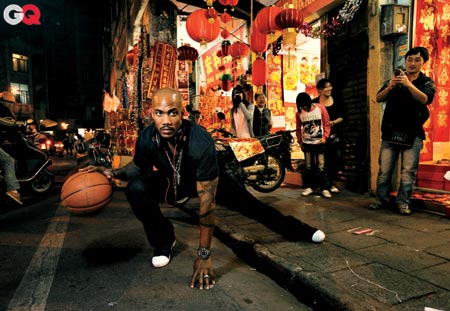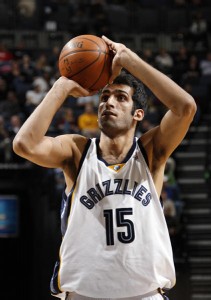Hoops Route: A journey across Asian Basketball
Understanding Asian Basketball presents the daunting task of trying to understand what binds Asia in itself. Separated by seas, mountains, Great Walls, culture, religion, and many, many languages, it is a continent like no other. And yet, despite its magnitude and its separations, the dozens of nations of the world’s largest continent remain tied together in the same cluster of brilliance and chaos. For thousands of years, the continent remained connected with trade routes like the Silk Road. Now, it is the rising economies, the populations, and its diversity that give the continent its unique identity.
And it’s a sport, too. While Football and Cricket are two of the most popular sports in Asia, the popularity of basketball has been rising at an exponential rate. China, Japan, the Philippines, India, Indonesia, and several hoops-strong Middle Eastern nations are contributing to the growing population of basketball players across the world. Although they are not at the level of teams from the Americas or Europe, Asian nations have been steadily rising with their national teams and their professional leagues. And as these nations rise economically, there is bound to be a time – sooner rather than later – that the populated continent begins to make bigger splashes in global basketball.
Here is a brief overview of Asian basketball.
We start where the Silk Road starts (or ends, if you work in the other direction!) – China! The most populous nation in the world is also the continent’s strongest basketball representative. While the country’s own estimates of ‘300 million basketball players’ (the entire population of the United States) might be a tad too exaggerated, it is still one of the most hoops-crazy nations on the planet.
China has dominated Asian Basketball for years. They have made more appearances in the Olympics Basketball tournament (8) than any other Asian nation. In recent years, they only seem to be getting better. China has produced a handful of NBA players (more than any other Asian nation) in the past, led by Asia’s biggest-ever superstar, Yao Ming. Players like Wang Zhi Zhi, Yi Jianlian, Mengte Bateer, and Sun Yue have flirted with the NBA in the past, too.
China also features one of the most powerful basketball leagues in Asia, the CBA. At 18, it’s still a relatively young league compared to the rest of the world, but it has grown in strength considerably since its inception and is now becoming a viable option for many of the world’s best talents outside the NBA. While the league still suffers from growing pains – like some lackadaisical quality, an uneven bridge of talent between foreign and local players, and refereeing scandals – it has improved every year and has a brighter horizon.
Challenging China’s dominance in Asia is a trio of Middle-Eastern nations who boast of athletically gifted players who regularly spring a surprise over the Chinese sides. Iran, Lebanon, and Jordan are the three strongest
sides from the West Asian Basketball Association (WABA) region. Iran, who are two-time champions of the FIBA Asia Championship, is a regular threat and even played in the 2008 Beijing Olympics. They feature Hamed Haddidi, a Center that has dominated Asian competition and is currently a fringe player on the Memphis Grizzlies. With Yi’s return to China, Haddidi is the only Asian still in the NBA. Outside of Haddidi, some of the best basketball players from Asia include Samad Nikkah Bahrami (Iran), Fadi El Khatib (Lebanon), and Sam Daghlas (Jordan). Top clubs from the WABA nation take part in the annual WABA League, one of the most hotly contested club competitions in Asia.
On the Eastern end of China’s massive borders are three neighbors who are regular contenders, Korea, Japan, and Chinese Taipei. They have their faint NBA credentials: Japan’s Yuta Tabuse and Korea’s Ha Seung-Jin have both made NBA appearances in the past. All the countries have well-organized – if not necessarily competent – domestic leagues. Chinese Taipei hosts the popular William Jones Cup tournaments for Men and Women annually.
The Philippines have one of the most interesting legacies in Asian Basketball. The nation has been infected with the hoops bug for over a century thanks to their historical American influence. They have won 8 titles in the FIBA Asia Championship (second only to China) and have made several memorable Olympic appearances. Their best days might be behind them, but the national team has seen a recent resurgence. Their chances for future glory have been further boosted as they will play host to the 2013 FIBA Asia Championship. The Philippines also boasts of a popular league – the PBA – and have perhaps the most culturally-inbred love of hoops out of all nations in Asia.
We’ll finish our brief Asian hoops-de-joie with India. If China is Asian hoops promise fulfilled, India is the continent’s sleeping giant. Together, the two nations comprise a third of the world’s population. For most of China, the sport of choice is basketball, but in India and its South Asian neighbors, it is Cricket that dominates proceedings. Despite the large numbers and improving economic status, India is still not a consistent sporting nation outside of Cricket, and basketball, among other sports, suffers from this. There is no league in India and the best players have to make do with semi-pro status. The national teams are still far away from challenging Asia’s best, and no individual yet has made a name on the global scale. India’s biggest success story is Women’s star Geethu Anna Jose, who has dominated Asian competitions and came close to a WNBA contract.
Despite its current state, India represents the hoops potential for all of Asia. Long has the continent been a sleeping giant in basketball, hounded by a disregard for the sport, mismanagement, and archaic training regimes compared to their North American or European counterparts. Just as the status of these nations has risen in recent decades in other fields, so will improvements eventually come in sports, particularly for our interest, in basketball.
And hopefully, the continent’s powerhouses can turn potential into reality and consistently produce world-class basketball talent.
1 Comment
Leave a Comment
You must be logged in to post a comment.




The picture of the kids playing ball in the Philippines is amazing!